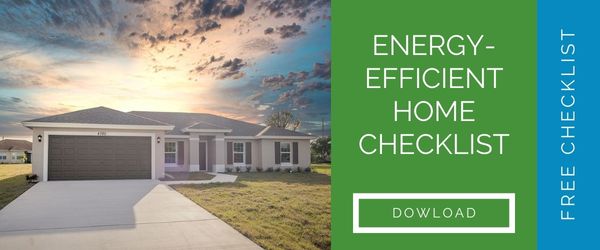When we think about issues as complex, pressing, and significant as climate change and energy, it can feel as if there is nothing we can do. Can we really make an impact? Yes, we can – by minimizing our impact! The best place to start is right at home. Residential energy use accounts for 20% of total greenhouse gas emissions and for 21% of total energy consumption in the United States. When we make strides in terms of energy efficiency in homes, we can see change… house by house and community by community.
Why Is Energy Efficiency Important?
Over the past several years, demand for green products, services, and homes has exploded. Many people want to live lifestyles that are more sustainable and environmentally friendly. It has become a top priority among homebuyers as well. They are seeking to increase efficiency while decreasing their utility costs. But let’s start at the beginning: why is energy efficiency important?
Energy efficiency is all about reducing energy consumption. It is a little different than just cutting back on activities or appliances that require power (which is what energy conservation is). Instead, efficiency is using technology to avoid or reduce waste so you can engage in the activities you need – from washing and drying your laundry to turning on the lights – while using less energy. This leads to several benefits:
- Environmental: When we increase efficiency, we can decrease greenhouse gas emissions and other pollutants that impact air quality. Another advantage is that we can reduce water use and pollution – which is a big issue as scarcity and drought make it difficult for billions of people to access safe water. As well, we can protect critical ecosystems and habitats.
- Economic: Energy efficiency is good for the bottom line! It not only helps build stability into power supplies and prices while creating green jobs, but it also lowers our individual utility bills month after month. Just by using energy efficient appliances, the average household can save $500 a year.
- Security: More efficient energy use allows us to use diverse resources and can help cushion the impact of rising fuel prices. Again, it helps shore up power grids, relieving a great deal of stress on these systems and infrastructures.
- Health: How does energy efficiency impact health? If we cut energy use by 15% in a year, it can save six lives a day and avoid $20 billion in health-related issues. Power plants release particulates into the air that are associated with lung cancer, heart attacks, and asthma.
Energy Efficiency In Homes
As mentioned, US homes account for 21% of the country’s total energy use and 20% of its greenhouse gas emissions. This is a big issue – and a big opportunity for meaningful change.
Our Gold and Platinum Series homes, for example, are up to 75% more efficient than existing homes and up to 50% more efficient than standard new builds. You can aggressively cut consumption – and costs – without sacrificing comfort, convenience, or style.
How did we create homes that lead the industry when it comes to efficiency? It begins with a tight thermal envelope. The thermal envelope is essentially anything that separates the air inside from the air outside. This includes the roof, foundation, windows and doors, outer walls, and insulation.
To take one example, standard new homes typically use R30 blown or batt insulation in attics. This can make this space as much as 44 – 64 degrees warmer than the total AC square footage. Imagine a hot, sticky, humid summer day in Southern Florida. Your air conditioner and fans are going to be working nonstop to try to cool your home. It’s essentially wasted energy and wasted money. Compare this to a high-performance home that uses R20 spray foam insulation.
Typically, the higher the R-value, the better the insulation. So wouldn’t R30 be better than R20? Well… not necessarily. It would be if we were comparing R30 fiberglass insulation with R20 fiberglass insulation. We’re not: we’re comparing R30 fiberglass with R20 spray foam.
Closed-cell spray foam has an R-value of about 6.5 per inch and open-cell spray foam has an R-value of 3.5 per inch. Both are much higher than the 2.2 per inch value of fiberglass. Additionally, though, fiberglass loses R-value over time. Spray foam, on the other hand, stays just as effective year in and year out.
This is just one way that we design with energy efficiency in mind; it is built into your home from start to finish. No matter why energy efficiency is important to you, you will find the results you want with Synergy Homes. Contact our team to learn more about the ultra-efficient, high-performance Gold and Platinum Series.

Comments are closed here.